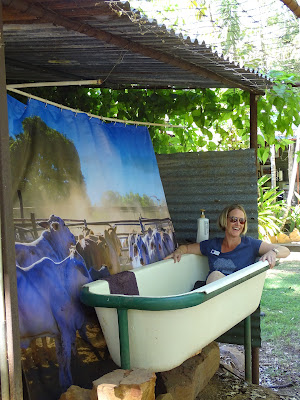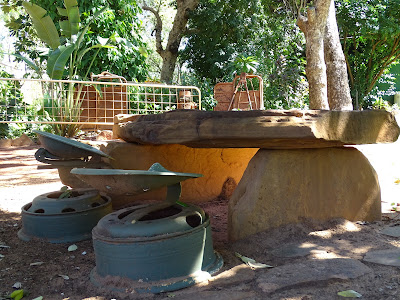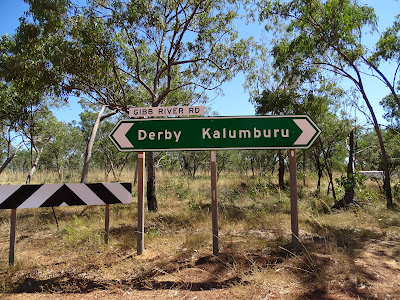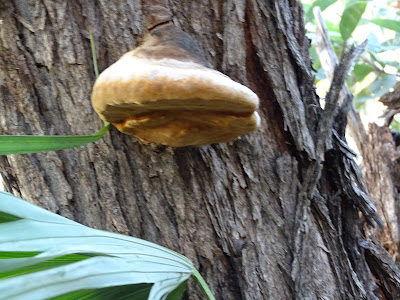Day Eight: Wednesday, 12th May 2021
Rose early from bed, photographed the sunrise, packed, breakfasted at 6:00 am, and departed Home Valley Station at 7:00 am.
Dimboola River, Home Valley Station
Sunrise, Home Valley Station
Bush Stone-Curlew (Burhinus grallarius)
Darwin Stick Insect (Eurycnema osiris) at Home Valley Station
Sad to see us leave Home Valley Station?!
First sighting of a wild Dingo
The dingo is a medium-sized canine that possesses a lean, hardy body adapted for speed, agility, and stamina. It's habitat covers most of Australia, but they are absent in the southeast and Tasmania, and an area in the southwest. As Australia's largest extant terrestrial predator, dingoes prey on mammals up to the size of the large red kangaroo, in addition to birds, reptiles, fish, crabs, frogs, insects, and seeds. A dingo pack usually consists of a mated pair, their offspring from the current year, and sometimes offspring from the previous year.
Bamboo Creek, Gibb River Road
Gibb River Road
Northern Salmon Gum (Eucalyptus bigalerita)
Quinine Bush (Petalostigma pubescens)
Fruit of the Quinine Bush
Another wildflower
Bunch Speargrass (Heteropogon contortus)
Bunch Speargrass is a major resident of northern forested and woodland pastures in Australia. It is nutritious to stack when young, but becomes coarse and unpalatable with age. It requires regular burning to produce leafy new growth.
Another example of Kimberley Heather
And, another wildflower!
Welcome to Ellenbrae Station
We arrived at Ellenbrae Station (a pastoral lease of one million acres!) at about 10:30 am, after traversing the 5 kilometre-long driveway, with the attraction, at the end, of a cuppa and their famous scones and cream.
Scones, jam cream, and cuppa at Ellenbrae Station!
Our group tucking-in
Ellenbrae Station Homestead
Ellenbrae Station homestead gradens
Ellenbrae Station brand
Ellenbrae homestead gardens
Outdoor bath house at Ellenbrae Station homestead featuring Karen
No! I'll stick with the bus, thank you! - Helen F
Improvised garden setting in the Elenbrae Station homestead
African Mahogany Tree (left) at Ellenbrae Station
The African Mahogany Tree is a large, usually deciduous, tree growing to 30 metres in height. It has a smooth thick trunk, up to 1 metre in diameter with dark grey bark. It has glossy pinnate mid-green leaves forming a thick canopy. It flowers in axillary panicles of small creamy white blossoms. Small woody capsules to 8 centimetres follow in the warmer months.
Fruit of the African Mahogany Tree
Replete and entertained, we returned along the driveway to the rough and corrugated Gibb River Road, and shortly after the compressor for the airconditioning failed. When we turned onto the Kalumburu Road towards Drysdale Station Homestead, we made a halt to gain respite from the heat. The temperature inside the bus was 37.5 degrees centigrade - outside is was a refreshing 26 degrees centigrade.
Kalumburu Road turnoff
Gibb River, from the Kalumburu road
The Kalumburu road
A very welcome sign!
In the morning we were advised that our destination for the day was Mitchell Falls Punamini Uunpuu Wilderness Lodge on the Mitchell Plateau. Unfortunately, the road was not open following damage caused during the Wet, but APT had arranged for the group to fly in small aircraft from Drysdale Station airstrip up to the Plateau. A secondary positive was that we were spared the rough trip along Warrender Road.
Drysdale Station airstrip
Arriving at Drysdale River Station, and having prepared small bags of clothes for two nights - all of our baggage was too much weight for the fixed wing aircraft - we packed the bus with all that was not required, and repaired to the airstrip.
We were allocated among four small planes - three six-seaters, and a four-seater. The latter aircraft, when attempting to start the engine, had no battery charge, so Noreen & Brian, and Helen & Anthony were left behind to await the return of one of the other planes.
Drysdale Station airstrip terminal
Fungii near the airstrip terminal
Wildflowers near the airstrip terminal
Sundown from near the airstrip terminal
While we awaited our plane, I explored the immediate vicinity and discovered fungi, wildflowers, and the orange sky of the setting sun.
Mitchell River in the evening light
Open savanna country in the evening light
Eventually, some hours later, and after a flight during the setting of the sun, we four also arrived on the Mitchell Plateau - tired, grubby, but satisfied. This adventure had delivered another first in Helen's life adventures - a flight in a small aeroplane!
"Quoll" site at Mitchell Falls Wildreness Lodge
The creek and other accommodation sites at Mitchell Falls Winderness Lodge
Go to Day Nine


















































Comments
Post a Comment